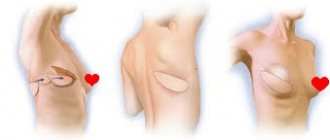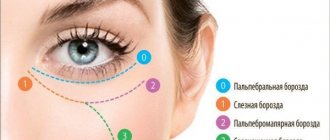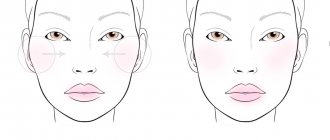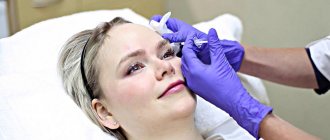Anatomy of the upper breast
Speaking about the anatomy of the breast, first of all, it is necessary to mention the nipple. It is at the forefront of the mammary gland's milk production system. This is what the baby looks for immediately after birth. The nipple is very sensitive to touch and temperature changes. Often nipples become the object of increased male attention. And how, I wonder, do the nipple and areola interact? We invite you to get acquainted with the anatomical structure and work of the main elements of the mammary gland.
Postoperative period
As a rule, nipple and areola plastic surgery is performed under local anesthesia. In this case, the patient is discharged home on the same or the next day after surgery. Scar care is performed either independently or on an outpatient basis. The stitches are removed after about a week. However, compression garments must be worn for another 10-14 days after this. Most types of correction of the nipple-areolar complex (with the exception of reduction of a hypertrophied nipple) do not interfere with the basic functions of the breast - the ability to produce breast milk. But, despite this, this type of plastic surgery is recommended to be performed after the end of the breastfeeding period.
Milky ducts
The milk ducts are tiny tubes that carry milk from the mammary glands (lobules) to the tip of the nipple. The ducts are lined with myoepithelial cells. A disease such as mastitis is characterized by blockage of the milk ducts. Most types of breast cancer begin to develop in the milk ducts. Ductal carcinoma in situ (a form of breast cancer from the ductal epithelium without invasion into adjacent tissues and metastasis) and infiltrative ductal carcinoma develop specifically in the milk ducts. A method for examining fluid from the mammary gland or ductal cells can be a ductogram or a HALO test (DNA fragmentation test).
Breast milk flows from openings on the surface of the nipple called milk pores. There are usually 2 to 3 pores in the center of the nipple and another 3 to 5 pores located around it. The pores have tiny sphincters (valves) designed to prevent milk from leaking when a woman is not breastfeeding. The ducts located just below the areola dilate before they enter the nipple. These wide, sac-like sections are called ampoules or lacteal sinuses.
The procedure for correcting the nipple-areolar complex
Nipple and areola surgery can be performed as a separate operation or in conjunction with other breast correction procedures. The duration of the operation, as a rule, does not exceed one hour. The correction can take place under local or general anesthesia. The type of anesthesia is selected depending on the individual characteristics of the patient, as well as the duration of the operation itself.
All operations to correct nipples or areolas can be divided into three groups:
1. change in nipple size (increase or decrease);
2. change in the shape and size of the pigmented area of skin around the nipple;
3. restoration of nipples or areolas.
Correction of an inverted nipple occurs by releasing the milk ducts, which cause the deformation. Such a procedure not only corrects the defect itself, but also improves breastfeeding functions. The operation is performed using microsurgical methods. The postoperative scar in this case is almost invisible, since the incision size is less than 1 cm.
Correction of the size and shape of the areola is carried out by reducing the pigmented area of skin around the nipple. It is believed that the optimal size of this zone should be 35-45 mm in diameter.
A reduction in the size of the nipple is corrected by wedge-shaped excision. Unfortunately, in most cases, such an operation disrupts breastfeeding functions. On the other hand, it is breastfeeding that causes nipple hypertrophy.
The most difficult operation is to restore the nipple or areola. The new nipple is formed from existing breast skin. To form a new areola, skin grafting is most often used. In this case, the donor area of skin is taken from the patient’s perineum, since the pigmentation of the skin in the areola area and in the perineal area is almost the same. In some cases, the effect of natural pigmentation is achieved through additional tattooing with special bio-inks.
Areola
The area of the breast surrounding the nipple, called the areola, is darker against the skin of the breast. The small bumps on the surface of the areola may be either Montgomery glands or hair follicles. The areola can be large or small, round or oval.
During pregnancy, the areola may increase in diameter. If you notice a change in the skin of the areola - pits, wrinkles or a rash - a woman should immediately consult a doctor. You shouldn’t be scared right away, because they may not be dangerous. But diagnosis is necessary: sometimes such changes can be symptoms of Paget's disease (also called eczema-like cancer). This breast cancer is rare and begins to develop in the nipple, appearing as a red, scaly rash.
Main indications
During a woman's life, various changes occur in her body, which can have a definite effect on the shape of her breasts. These factors include puberty, pregnancy, breastfeeding, weight gain and loss. However, in addition to the shape and size of the breast, negative changes can also affect the nipple-areola complex. Such defects can be corrected using corrective plastic techniques.
The main indications for such an operation are:
· very large or inverted nipple; · disproportionately long or wide nipple; · asymmetry or deformation; · partial or complete absence of a nipple or areola; · disproportionately large size of areolas.
Of course, corrective plastic surgery of nipples or areolas is mostly done by women. However, sometimes men also resort to it. Especially in cases of injury or absence of nipples and areolas.
Nipple and areola surgery: before and after photos
Tags: plastic surgery
Market Analytics
- Black Lives Matter movement: reaction and consequences for the beauty industry
- COVID-19 is changing the rules of the game in the cosmetics market
- Beauty of the future: cosmetic innovations 2020
Convenient search for beauty salons on our website
Beauty salons in Moscow Beauty salons in St. Petersburg Beauty salons in Ekaterinburg Beauty salons in Novosibirsk
Latest blog posts on our website
- Naturecream / Apricot kernel oil for face
- Naturecream / MATRIXYL3000 - the best skin elasticity stimulator
- Naturecream / SPF in Natural Oils
- Naturecream / Geranium (Pelargonium) oil for skin health and beauty
- Prostye-sovety / Save on a beauty salon: procedures that can be done at home
- Naturecream / Growth Factor - brings back youth?
- Oksana-Lezina / 3 effective abdominal exercises from a fitness instructor for beginners
- Prostye-sovety / Making perfect curls at home
- Prostye-sovety / Which hair removal method to choose
- Naturecream / Wrinkles Puppets
Latest forum topics on our website
- Natalya / How to properly make a gelatin mask?
- Mrs._Smith / Badly sunburned! What to do?((
- Ice / Is it necessary to combine fitness classes with a diet?
- Antonova / What can be used for hair loss?
- Radio operatorKat / Who was on a protein diet?
Reviews about the procedure
Nipple and areola plastic surgery [Leave a review]
Leave your feedback about this procedure (it will appear on this page after moderation)
In this form, describe only
your personal
experience of undergoing the procedure.
In order to leave a comment regarding the content of the article, use another form - in the “comments” block at the bottom of the page.
Other articles in this section
| Myths about breast augmentation. Cabbage, hops, exercises, creams - why these and other methods do not work Many women want to enlarge their breasts at home, they do not want to spend money on plastic surgery, and resort to various kinds of “folk” remedies, which are described in abundance on the Internet. However, in reality these remedies do not work. In this article we will describe why. |
| Breast reconstruction (reconstructive mammoplasty) Breast reconstruction includes a variety of procedures aimed at restoring the shape and structure of the breast after breast amputation (mastectomy). The range of procedures is determined by the individual anatomical structure, aesthetic goals and the need for postoperative chemotherapy or radiation therapy. Before deciding to undergo a postmastectomy, it is important to discuss the procedure with your plastic surgeon, as surgery to remove the cancerous tumor can significantly affect the choice of procedures and the results of any type of breast reconstruction. |
| Breast lift (mastopexy) Breasts that are sagging or uneven in size with insufficient volume, drooping nipples and stretched areolas (the dark areas around the nipples) need a lift. A breast lift returns the breasts to a youthful, healthy appearance and optimal shape. |
| Protecting the rights of plastic surgeons' patients What to do if the results of plastic surgery do not suit you or cause significant harm? Your interests can be protected by recovering compensation from a medical institution or by ensuring that unscrupulous surgeons are held accountable. |
| Breast Augmentation Breast augmentation surgery, also known as mammoplasty, increases or restores breast size using gel implants, water-salt implants or, in some cases, fat transfer. This is one of the most popular and most frequently performed aesthetic surgeries. Thanks to breast enlargement, a huge number of women have increased their self-esteem, gained the desired proportions of their figure and self-confidence. |
| Correction of breast asymmetry Nothing ideal exists in nature. This conclusion also applies to the human body, the proportions of which are not always 100% symmetrical. Thus, in 8 out of 10 women, the shape and volume of the mammary glands may differ slightly, which is visually imperceptible. The norm is the presence of breast asymmetry within the same size. Such imperfections can be easily corrected by choosing the right underwear. In case of more significant deviations, surgical intervention is required. |
| Breast implants (breast endoprostheses) Breast implants or breast endoprostheses are sterile medical devices that are surgically placed under the mammary gland or pectoral muscle to increase the size and shape of the breast. |
| Breast Reconstruction (Breast Implant Replacement) Breast implant revision surgery, usually involving the displacement and/or replacement of saline or silicone breast implants, is performed to change not only the size of your breasts, but also the appearance of your breasts beyond your original breast augmentation vision. The final goal of the operation is to restore the natural youthful shape of the bust. |
| How to choose the right plastic surgery clinic and draw up a contract for the operation The success of plastic surgery depends on the correct choice of the clinic, and compensation for possible problems depends on reasonable precautions at the stage of preparation for the operation. How to choose a clinic and what you need to know when concluding a contract? |
| Breast reduction The main goal of reduction mammoplasty is to change the shape and reduce the size of the breast. This procedure is performed if large breasts cause physical discomfort and your body does not look proportional. Most often, breast reduction surgery has the dual benefit of relieving the physical and emotional stress of overly large breasts, as well as improving overall appearance. |










